 W
WFair of Albacete is a fair celebrated from 7–17 September in the city of Albacete, Spain, to honor the Virgen de los Llanos. It was declared Festivity of international interest, it takes place in the permanent fairground commonly known as 'the pan' or 'the circles' situated near the centre of the city. It has a very well-known bullfighting activities and hundred of other takes place during the days, and the city gets to quadruple its inhabitants during the festivity.
 W
WThe allegory of Hispania is the national personification of Spain.
 W
WLas arras, or las arras matrimoniales are wedding paraphernalia used in Christian wedding ceremonies in Spain, Latin American countries, and the Philippines. The tradition is also followed, with varying names and customs, in other countries and communities bearing degrees of Hispanic influence. Traditionally, in Spain and Latin America, it is made up of thirteen gold coins presented in an ornate box or chest; in the Philippines, it is in an ornate basket or pouch. After being blessed by a priest, they are given or presented by the groom to the bride.
 W
WArt Madrid is a contemporary art fair organized by the company Arte y Asociados in Madrid since the year 2006 and that agrees in the time with ARCO. In terms of number of galleries, it is the second largest contemporary art fair in Spain.
 W
WThe Biblioteca Nacional de España is a major public library, the largest in Spain, and one of the largest in the world. It is located in Madrid, on the Paseo de Recoletos.
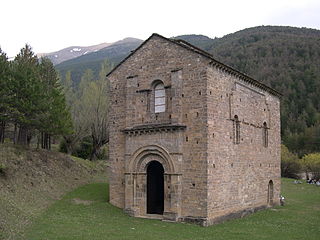 W
WA Bien de Interés Cultural is a category of the heritage register in Spain. The term is also used in Venezuela and other Spanish-speaking countries.
 W
WBotellón is a Spanish activity when people congregate in public areas to socialize while drinking alcohol. The activity is popular among teenagers and young adults partly in response to rising drink prices at bars or clubs, and partly because more people can meet in one place. Botellón is not an alternative to typical nightlife, but is rather an economical way to drink with people before going out to bars, discos, or clubs.
 W
WA botijo, also called búcaro in Egypt, is a traditional porous clay container designed to contain water. The botijo has the property that once filled, it cools the water that it contains, acting as an evaporative cooler.
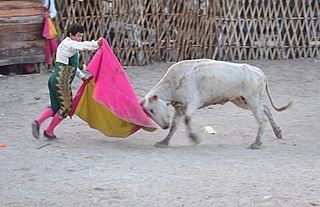 W
WA bullfighter is a performer in the activity of bullfighting. Torero or toureiro, both from Latin taurarius, are the Spanish and Portuguese words for bullfighter and describe all the performers in the activity of bullfighting as practised in Spain, Portugal, Mexico, Peru, France, Colombia, Ecuador, Venezuela and other countries influenced by Portuguese and Spanish culture. The main performer and leader of the entourage in a bullfight, and who finally kills the bull, is addressed as maestro (master), or with the formal title matador de toros. The other bullfighters in the entourage are called subalternos and their suits are embroidered in silver as opposed to the matador's gold. They include the picadores, rejoneadores, and banderilleros.
 W
WCastizo is a racial category used in 18th-century Casta paintings of Colonial Spain to refer to people who were three-quarters Spanish by descent and one-quarter Amerindian. The feminine form of the word is castiza. Nowadays the term castizo also came to mean mixed-race people with light skin, in comparison to mulattos, pardos, mestizos and coyotes who would be mixed-race people with dark skin.
 W
WThe national symbols of Catalonia are flags, icons or cultural expressions that are emblematic, representative or otherwise characteristic of Catalonia or Catalan culture.
 W
WThe Spanish Catholic Church, or Catholic Church in Spain, is part of the Catholic Church under the spiritual leadership of the Pope in Rome, and the Spanish Episcopal Conference.
 W
WThe Collegio di Spagna is a college for Spanish students at the University of Bologna, Italy, which has been functioning since the 14th century. Its full original name in English translation was the College of Saint Clement of the Spaniards. It has been under the Royal patronage of the Spanish Crown since 1488, as authorized by Pope Innocent VIII.
 W
WThe Comillas Foundation is a private nonprofit organization based in the town of Comillas, Cantabria, Spain. Comillas Foundation, established in 2005, is dedicated to promote Spanish language and Hispanic culture. The academic activities of Comillas Foundation are developed through the International Center for Higher Spanish Studies (CIESE-Comillas), associated to the University of Cantabria. Besides that, the foundation provides forums and seminars related with Spanish language and culture.
 W
WA comparsa is a group of singers, musicians and dancers that take part in carnivals and other festivities in Spain and Latin America. Its precise meaning depends on the specific regional celebration. The most famous comparsas are those that participate in the Carnival of Santiago de Cuba and Carnaval de Barranquilla in Colombia. In Brazil, comparsas are called carnival blocks, as those seen in the Carnival of Rio de Janeiro and other Brazilian carnivals. In the US, especially at the New Orleans Mardi Gras, comparsas are called krewes, which include floats.
 W
WThe Cross of Burgundy or the Cross of Saint Andrew, a saw-toothed (raguly) form of St. Andrew's cross, was first used in the 15th century as an emblem by the Valois Dukes of Burgundy, who ruled a large part of eastern France and the Low Countries as effectively an independent state. The Burgundian Low Countries were inherited by the Habsburgs, who adopted the flag at the extinction of the Valois ducal line and continued to use it as one of their many symbols up to the 18th century. With the Burgundian Habsburgs coming to power in Spain in the 16th century, the emblem served as a naval ensign of the Spanish Empire up to 1701, and up to 1843 as the land battle flag, acquiring a global impact throughout Europe and the Americas in the possessions of the Spanish crowns of Castile and Aragon. It is found nowadays in different continents and still appears on regimental colours, badges, shoulder patches and company guidons. The use of the emblem in a variety of contexts, in a number of European countries and in the Americas, reflects the historical extent of Burgundian, Habsburg, and Spanish territories.
 W
WDon Juan, also known as Don Giovanni (Italian), is a legendary, fictional libertine who devotes his life to seducing women. Famous versions of the story include a 17th-century play, El burlador de Sevilla y convidado de piedra by Tirso de Molina, a 1787 opera, Don Giovanni, with music by Mozart and a libretto by Lorenzo da Ponte, and a satirical, epic poem, Don Juan, by Lord Byron.
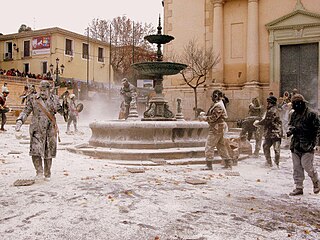 W
WThe annual festival of Els Enfarinats takes place in the town of Ibi in Alicante, Spain on December 28, as part of celebrations related to the Day of the Innocents. Els enfarinats comes from the Valencian word for "breading", and roughly translate to "the breaded ones" or "the floured ones". In the day-long festival, participants known as the Els Enfarinats dress in mock military dress and stage a mock coup d'état. Meanwhile, the Casats i Fadrins, accompanied by a band of street musicians called the Rondalla, known by the name of Sonet, Xirimita and Tabal, tour the city. At 8am, the Els Enfarinats take the city under the slogan "New Justice", and at 9am the Race for Mayor will take place in which it will be decided who is to be Mayor of the Els Enfarinats. Then, the act of L'Aixavegó is carried out in the Plaça de l'Església, where the Els Enfarinats reside. Here, it is decided that those who do not pay the fine will go to jail. At midday, a collection called the Arreplegada dels Enfarinats takes place through the streets of the old quarter and of the city centre of Ibi, terminating in the Sant Joaquim Sanctuary. They exercise their authority under a blaze of fireworks, flour bombs and eggs. At five o'clock in the afternoon the authority of Els Enfarinats comes to an end giving way to the celebration of the traditional Dansà.
 W
WThis is a list of equestrian statues in Spain.
 W
WGacería is the name of a slang or argot employed by the trilleros and the briqueros in the village of Cantalejo, in the Spanish province of Segovia. Gacería incorporated Galician, French, Basque and Arabic words into its vocabulary, a linguistic practice employed by other traveling professional groups of Castile. Users of Gacería also incorporated words from Caló, Germanic languages and Catalan-Valencian.
 W
WA traditional Spanish garden is a style of garden or designed landscape developed in historic Spain, incorporating principles and elements of garden design from precedents in ancient Persian gardens, Roman gardens and Islamic gardens, and the great Moorish gardens of the Al-Andalus era on the Iberian Peninsula. In the 20th and 21st centuries a 'Spanish Garden,' or new gardens in Spain, have continued, interpreted, abstracted, or departed from these traditional planning and aesthetic motifs.
 W
WThe Greco-Iberian alphabet is a direct adaptation of an Ionic variant of a Greek alphabet to the specifics of the Iberian language, thus this script is an alphabet and lacks the distinctive characteristic of the paleohispanic scripts that present signs with syllabic value, for the occlusives and signs with monophonemic value for the rest of consonants and vowels.
 W
WHaro Wine Festival is a summer festival in the town of Haro in the La Rioja region of Northern Spain. It features a Batalla de Vino and youth bullfights.
 W
WHispanism is the study of the literature and culture of the Spanish-speaking world, principally that of Spain and Hispanic America. It can also entail studying Spanish language and culture in the United States and in other presently or formerly Spanish-speaking countries in Africa, Asia, and the Pacific, such as the Philippines and Equatorial Guinea.
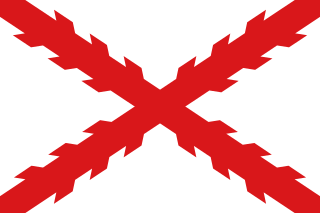 W
WHispanismo or Hispanicism is an ideology, school of thought and historiographic current centered on Spanish heritage. In Hispanic America it is similar to but very distinct from indigenismo. A broader definition describes it as studies of Spanish art, music, and folklore by foreigners. The term is also associated with Hispanism, which refers to a movement that reasserts the cultural link between Spain, Hispanic America, Equatorial Guinea and the Philippines.
 W
WThe Indalo is a prehistoric magical symbol found in the cave of "Los Letreros" in Sierra de María-Los Vélez Natural Park in Vélez Blanco, Almería, Andalusia, Spain. It has been customary to paint the Indalo symbol on the front of houses and businesses to protect them from evil and is considered to be a god totem. The indalo has an origin in the Levante, Spain and dates back to 2500 BC. The pictograph was named in memory of Saint Indaletius, and means Indal eccius in the Iberian language.
 W
WInstituto Cervantes is a worldwide non-profit organization created by the Spanish government in 1991. It is named after Miguel de Cervantes (1547–1616), the author of Don Quixote and perhaps the most important figure in the history of Spanish literature. The Cervantes Institute, a government agency, is the largest organization in the world responsible for promoting the study and the teaching of Spanish language and culture.
 W
WThis List of cultural icons of Spain is a list of links to potential cultural icons of Spain.
 W
WMajo (masc.) or maja (fem.), also manolo and manola, after the most popular names, were people from the lower classes of Spanish society, especially in Madrid, who distinguished themselves by their elaborate outfits and sense of style in dress and manners, as well as by their cheeky behavior. They flourished from the late 18th to early 19th century, and to some extent later. Majos and majas were one of the favorite subjects of some 19th-century Spanish painters.
 W
W W
WA montería, is an ancient type of driven hunt endemic to the Iberian Peninsula. It involves the tracking, chase and killing of big-game, typically red deer, wild boar, fallow deer and mouflon. A number of "rehalas" along with their respective "rehaleros" will stir up an area of forest with the aim of forcing the game to move around and into the shooting posts, where hunters will be able to fire.
 W
WMoros y Cristianos or Moros i Cristians literally in English Moors and Christians, is a set of festival activities which are celebrated in many towns and cities of Spain, mainly in the southern Valencian Community. According to popular tradition the festivals commemorate the battles, combats and fights between Moors and Christians during the period known as Reconquista. There are also festivals of Moros y Cristianos in Spanish America.
 W
WA palloza is a traditional dwelling of the Serra dos Ancares of northwest Spain.
 W
WA Paso is an elaborate float made for religious processions. They are carried by porters on staves, like a litter or sedan chair, and are usually followed or escorted by a band. Some have long skirts that cover the bearers entirely, giving the impression that the statue is floating on its own power.
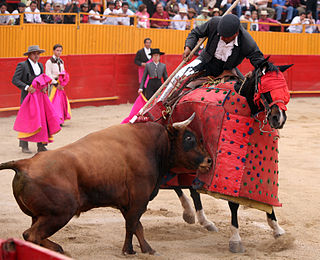 W
WA picador is one of the pair of horse-mounted bullfighters in a Spanish-style bullfight that jab the bull with a lance. They perform in the tercio de varas, which is the first of the three stages in a stylized bullfight.
 W
WThe Plaza de España is a plaza in the Parque de María Luisa, in Seville, Spain. It was built in 1928 for the Ibero-American Exposition of 1929. It is a landmark example of Regionalism Architecture, mixing elements of the Baroque Revival, Renaissance Revival and Moorish Revival (Neo-Mudéjar) styles of Spanish architecture.
 W
WPlus ultra is a Latin phrase and the national motto of Spain. It is taken from the personal motto of Charles V, Holy Roman Emperor and King of Spain, and is a reversal of the original phrase non plus ultra. This was said to have been inscribed as a warning on the Pillars of Hercules at the Strait of Gibraltar, which marked the edge of the known world in antiquity. Charles adopted the motto following the discovery of the New World by Columbus, and it also has metaphorical suggestions of taking risks and striving for excellence.
 W
WThe Queen Sofía Spanish Institute is an organization in New York City, founded to promote the Spanish language and the culture of Spain and the Americas. Its office is located at 575 Madison Avenue, following the sale of the 684 Park Avenue location in 2016.
 W
WA running of the bulls is an event that involves running in front of a small group of cattle, typically six but sometimes ten or more, that have been let loose on a course of a sectioned-off subset of a town's streets, usually as part of a summertime festival. Particular breeds of cattle may be favored, such as the toro bravo in Spain, also often used in post-run bullfighting, and Camargue cattle in Occitan France, which are not fought. Bulls are typically used in such events.
 W
WThe Running of the Nudes, like the well-known Running of the Bulls, takes place in Pamplona, Spain. The Running of the Nudes occurs two days before the Running of the Bulls, just before the start of the nine-day festival of San Fermín. The event was created in 2002 and is supported by animal welfare groups, including PETA, who object to the Running of the Bulls, claiming that the event is cruel and glorifies bullfighting, which the groups oppose. In the Running of the Nudes, naked humans, many wearing only plastic horns and red scarves, follow the same route taken by the Running of the Bulls, from the Santo Domingo corrals through the town’s streets, ending at the Plaza de Toros. The length of the run is some 800 metres and the event takes about one hour.
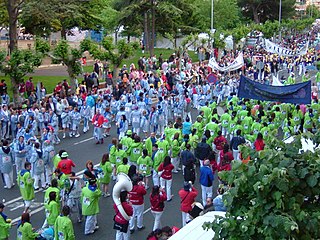 W
WSaint John of the Mountain Festival is a festival in the town of Miranda de Ebro in the autonomous community of Castile and León, in Spain. It is celebrated on the Monday of Pentecost and it is the second most important romeria in Spain behind El Rocío.
 W
WA siesta is a short nap taken in the early afternoon, often after the midday meal. Such a period of sleep is a common tradition in some countries, particularly those where the weather is warm.
 W
WActual skulls and bones were long used to mark the entrances to Spanish cemeteries. The practice, dating back many centuries, led to the symbol eventually becoming associated with the concept of death. Some crucifixes feature a skull and crossbones beneath the corpus, in reference to a legend that the place of the crucifixion was also the burial place of Adam or, more likely, in reference to the New Testament statement that the place of his crucifixion was called "Golgotha".
 W
WThe southeastern Iberian script, also known as Meridional Iberian, was one of the means of written expression of the Iberian language, which was written mainly in the northeastern Iberian script and residually by the Greco-Iberian alphabet. About the relation between northeastern Iberian and southeastern Iberian scripts, it is necessary to point out that they are two different scripts with different values for the same signs; however it is clear that they had a common origin and the most accepted hypothesis is that northeastern Iberian script derives from southeastern Iberian script. In fact, the southeastern Iberian script is very similar, both considering the shape of the signs or their values, to the Southwestern script used to represent an unknown language usually named Tartessian. The main difference is that southeastern Iberian script does not show the vocalic redundancy of the syllabic signs. Unlike the northeastern Iberian script the decipherment of the southeastern Iberian script is not yet complete, because there are a significant number of signs on which scholars have not yet reached a consensus. Although it is believed that the southeastern Iberian script does not show any system to differentiate between voiced and unvoiced occlusives, unlike the northeastern Iberian script, a recent paper defends the existence of a dual system also in the southeastern Iberian script.
 W
WThe Summer Festival of Reus is considered the most important festival of Reus. It is also known as the festival of Saint Peter. In addition, this celebration has been named as a Traditional Festival of National Interest by the Generalitat. It has dozens of events which revolve around the tronada.
 W
WTBO was a long-running Spanish comic book magazine, published in Barcelona between 1917 and 1998.
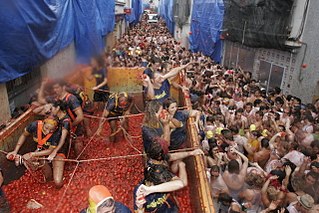 W
WLa Tomatina is a festival that is held in the Valencian town of Buñol, in the East of Spain 30 kilometres (19 mi) from the Mediterranean, in which participants throw tomatoes and get involved in a tomato fight purely for entertainment purposes. Since 1945 it has been held on the last Wednesday of August, during a week of festivities in Buñol. The event in 2020 was cancelled due to the COVID-19 pandemic in Spain.
 W
WA tuna is a group of university students in traditional university dress who play traditional instruments and sing serenades. The tradition originated in Spain and Portugal in the 13th century as a means of students to earn money or food. Nowadays students don't belong to a "tuna" for money nor food, but seeking to keep a tradition alive, for fun, to travel a lot and to meet new people from other universities. A senior member of a tuna is a "tunante", but is usually known simply as a "tuno". The word “tuno” also refers to anyone who is a member of a tuna, although the first conceptualisation is more used among tunas. Newbies are known as "caloiros", "novatos" or "pardillos".
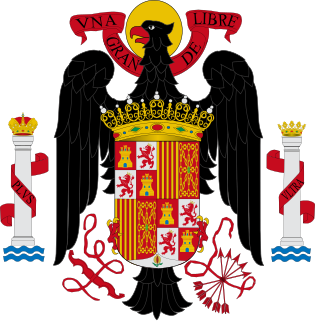 W
WThe mottos of Francoism are mottos which encapsulate the ideals of the Francoist dictatorship. Although the regime had many ideological influences, it employed Falangism in its popular movements. Falangist ideology was easily incorporated in the creation of mottos as it is believed to demonstrate a certain reluctance towards political agendas, and to favour empiricism, taking action, and the simplification of ideas.
 W
WThe traditional wedding cord, also known as the wedding lasso, is a piece of wedding paraphernalia used in some Christian Catholic wedding ceremonies. This is actually a representation of a loop of rosary beads made out of white satin or silk. During the wedding proper, this is traditionally formed into a figure-of-eight shape, and then placed around the neck areas of the bride and the groom after they have made their wedding vows, and are already kneeling on pillows for the pronouncement of a wedding prayer. This cord symbolizes lifetime unity or the everlasting union of the bride and groom when they officially become husband and wife, as well as a symbol of marital protection; while the loops formed signifies their love for one another. After the wedding, this marital twine is typically kept by the bride as a wedding souvenir. Use of the traditional wedding cord for weddings is common in Hispanic countries such as Mexico, the Philippines, and Spain.
 W
WZarzuela is a Spanish lyric-dramatic genre that alternates between spoken and sung scenes, the latter incorporating operatic and popular songs, as well as dance. The etymology of the name is uncertain, but some propose it may derive from the name of a royal hunting lodge, the Palace of Zarzuela, near Madrid, where that type of entertainment was allegedly first presented to the court. The palace in turn was named after brambles, which grew there, and so the festivities held within the walls became known as "Zarzuelas".